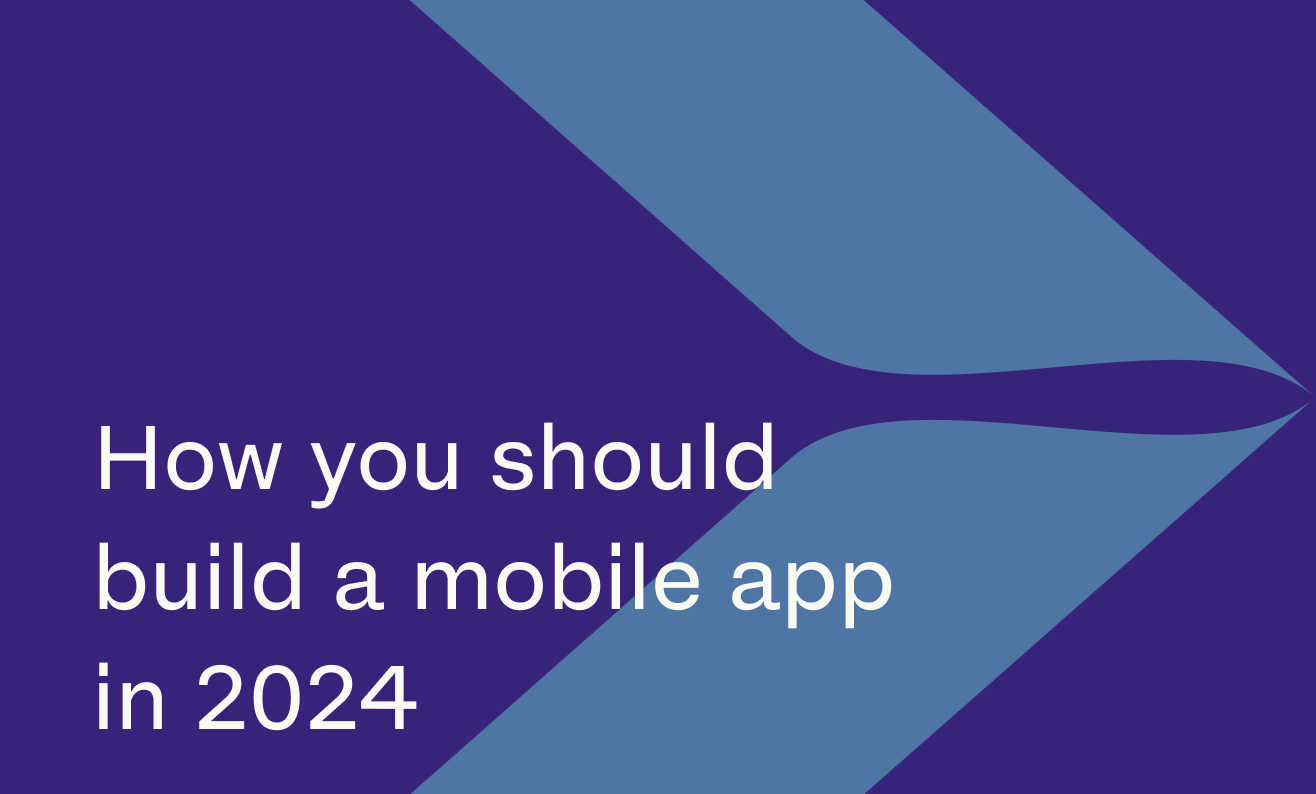13 December 2023
How you should build a mobile app in 2024
Since the inception of the first mobile app, three decades ago, these convenient platforms have seamlessly woven into our daily lives, revolutionising how we communicate, work and entertain ourselves. They also open up compelling opportunities for brands looking to scale their business, establish a stronger digital presence and enhance customer engagement and loyalty. In this blog, we'll delve into the advantages of mobile apps for business, explore different approaches to building them and help you start your journey to finding the right app for your business, and your customers.
Filters

The benefits of building a mobile app
Mobile apps present businesses with a powerful opportunity to reach a broad audience, enhance brand visibility and deliver a seamless, personalised user experience. Given the widespread reliance on smartphones for information and services, having a mobile app can significantly amplify customer engagement, foster loyalty and create avenues for expanding market share. A well-crafted mobile app not only boosts brand visibility but enables companies to customise experiences, providing a personal touch that resonates with different users and ensures a good product-market fit.
Additionally, mobile apps simplify access to information and services, serving as a convenient platform for effortless customer interaction. This streamlined experience contributes to enhanced user satisfaction, increasing the likelihood of customer retention.
How to build a mobile app: Important considerations
When starting your mobile app development it's crucial to carefully consider the approach that best aligns with your user’s needs, your goals, budget and technical requirements. With a clear trajectory in mind, you can successfully transition from idea to Minimum Viable Product (MVP).
Here, we'll explore three of the top mobile app development approaches, each with its own set of advantages and challenges.
The native app approach
The native app approach involves developing separate applications for different platforms, such as Apple's iOS and Android. While this approach offers the best utilisation of native functionalities, it comes at a cost – both in terms of development expenses and the need for two distinct development teams, one for iOS and another for Android. While native apps provide optimal performance, the need for dual development can be seen as a potential drawback, especially when the native features are not essential for the app's core functionality.
The react native/compiled native app approach
This is the approach we use at Miyagami and with good reason. The react native/compiled native app methodology is popular among both B2B and B2C businesses for its efficiency and versatility. It enables developers to use a single code base for both iOS and Android platforms, reducing development costs and streamlining the end-to-end process.
With one development team proficient in a single language, the Miyagami approach ensures better collaboration and ease of management. Additionally, this way of working allows for the creation of a web admin interface, further enhancing the app's adaptability. By accessing almost all native functionalities, react native/compiled native offers a balanced compromise between performance and development efficiency, making it a great choice for a wide range of applications and a wide range of businesses.
Find out more about the Miyagami approach.
The Progressive Web App (PWA) approach
Progressive web apps (PWAs) represent a different approach, blurring the lines between websites and mobile apps. PWAs are essentially websites with service workers that provide a mobile app-like experience. While PWAs are often perceived as quicker to develop and maintain, they may lack certain functionalities, such as geolocation, when compared to native apps.
Furthermore, some big app stores, including Google Play and the Apple App Store, may not fully support the integration of PWAs, which limits the available distribution channels.
Choosing the Miyagami approach: React native / compiled native
While each approach has its merits, our experience (and the testimonials of our clients) has shown us that the react native/compiled native app development approach achieves the best results and ROI. The ability to maintain a single code base, utilise a unified development team, and access almost all native functionalities makes react native/compiled native an efficient and cost-effective solution. The flexibility to incorporate a web admin interface further enhances the app's adaptability, making sure it satisfies diverse user needs and achieves business objectives.
Want to see some of our work? Take a look at some mobile app development client cases.
Making informed choices
The decision to build a mobile app requires careful consideration of the different approaches, weighing the pros and cons in alignment with your specific goals and objectives. While native apps offer optimal performance and PWAs provide a quick development option, the Miyagami approach strikes a balance between efficiency, functionality and cost-effectiveness.
As you embark on your journey into mobile app development, remember the importance of choosing the right digital partner. Collaborating with a skilled and experienced app design and development company can greatly impact the success of your app, ensuring it continues to delight users for many years to come.
Regardless of whether you choose the Miyagami approach or another strategy, the expertise and guidance provided by a proficient agency guarantees a seamless development process and a successful launch. Want to find out more about the Miyagami way of working and how it can help your business? Get in touch today - we’d love to help. Interested in discovering how the right apps can grow your business? Check out our blog on best practices for building scalable web and mobile applications.



